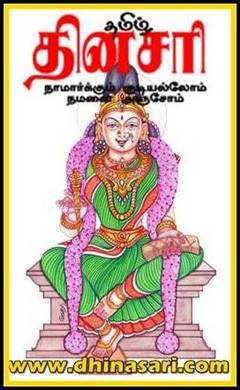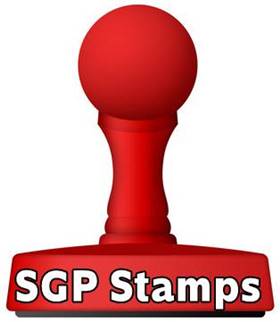
By Narasimhan Vijayaraghavan
Eyewitness accounts matter and talk better. One borrows with alacrity, aplomb and ease as it fits with our focus on the nuggets at play. A local villager, Mohammad Hasan Qureshi, 86, clearly remembers those stormy days. A week before the Pathans came, there were rumours that Kashmiri Sikhs [who had a significant population in this area] were planning to attack Muzaffarabad,” he says.
“A couple of days later, we heard that Pathans were coming”. Such rumours were natural, coming as they did amid a series of upheavals that shook the princely state of Kashmir when the so-called 3 June Plan was announced.Under the plan, British India, a Hindu-majority colony, was to be partitioned to create the Muslim state of Pakistan.The fate of Kashmir, a princely state with a Muslim majority but a Hindu ruler, hung in the balance.
Muslims in the western districts of the state revolted against the ruling maharaja in June and there were anti-Muslim riots in southern Kashmir in September. There were also reports of a leaked Pakistani plan for raising a tribal column of 20,000 fighters to attack and annex Kashmir.

Mr Qureshi remembers the evening of 21 October, when he and some friends climbed a ridge to have a view of the western valley. They saw trucks carrying Pathans drive down the Batrasi hills into Garhi Habibullah.
“We stayed up all night, waiting. They came in the morning – just before daybreak. There were hundreds of them. Most of them carried axes and swords. Some had muskets, others just sticks. The Maharaja’s guards at the barrier had vanished.”
First clashes took place on their way down to Muzaffarabad, some 8km (5 miles) of steep descent.
Gohar Rahman, a World War Two veteran from Battagram, 80km north-west of Garhi Habibullah, was in the column that crossed from Dub Gali. “We knew the area so we led one group through this shorter route, on foot,” he says. “The bulk of the Frontier tribesmen – Wazir, Mahsud, Turi, Afridi, Mohmand, the Malakand Yusufzais – went via the longer but easier Lohar Gali route in lorries and trucks.”
Around 2,000 tribesmen stormed Muzaffarabad that morning and easily scattered the Kashmir state army deployed there. Military historians estimate it was just 500-strong at the time and had also suffered defections by Muslim soldiers.
Flushed with victory, the tribesmen got down to wanton looting and arson.
“They plundered the state armoury, set entire markets on fire and looted their goods,” Mr Rahman says.
“They shot everyone who couldn’t recite the kalima – the Arabic-language Muslim declaration of faith. Many non-Muslim women were enslaved, while many others jumped in the river to escape capture.”
The streets were littered with signs of mayhem – broken buildings, broken shop furniture, the ashes of burnt goods and dead bodies, including those of tribal fighters, state soldiers and local men and women. There were also bodies floating in the river.
The raiders spent about three days in Muzaffarabad before sense prevailed and the leaders urged them to move on towards Srinagar, the state capital some 170km to the east. From here, one column drove in trucks down the Jhelum river, breezing past Uri and reaching Baramulla where another round of looting and arson ensued.
We can capture the timeline as follows:
3 June 1947: The June Plan, also called the Mountbatten Plan, is approved in a meeting. It culminates in the Independence of India Act 1947 which partitions British India into independent states of India and Pakistan. The Act receives royal assent in July.
15 June: Agitation in the form of a No-Tax campaign starts in Poonch, an internal principality of Kashmir state.
15 August: Killings are reported from Bagh in Poonch principality when pro-Pakistan groups try to hoist a Pakistani flag to mark independence and clash with the state police.
12 September: Prime Minister of Pakistan Liaquat Ali Khan holds a meeting with military and civilian officials where a go-ahead is reportedly given to two plans: raise a tribal force to attack Kashmir from the north and arm the rebels in Poonch.
4 October: Rebels clash with state forces at a place called Thorar, and go on to besiege state forces in Poonch.
22 October: Tribal bands attack Muzaffarabad, then move eastwards to capture Baramulla. Some of the fighters reach the outskirts of Srinagar.
24 October: Sardar Ibrahim, a pro-Pakistan landlord from Poonch principality, announces the founding of the government of Azad (free) Jammu and Kashmir (AJK) at a place called Palandri, and appoints himself as its head.
26 October: The Maharaja of Kashmir, earlier inclined to stay independent due to the demographic composition of his state, accedes to India, presumably under duress.
27 October: Indian air and ground troops start landing at Srinagar, tilting the balance against tribal invaders and leading to the partition of Kashmir along the line that more or less exists today.
We would be failing in our duty if we did not recall the bravery and brauvara of our patriotic soldiers. We shall promptly go there. Even as the proceedings before constitution bench goes on, we must not forget that but for the valor and sacrifice of our armed forces , there may have been no Art.370 to debate over. Dreadful and mind boggling construct to even contemplate.
(Author of Constitution. & its Making/Working, OakBridge is practicing advocate in the Madras High Court)





